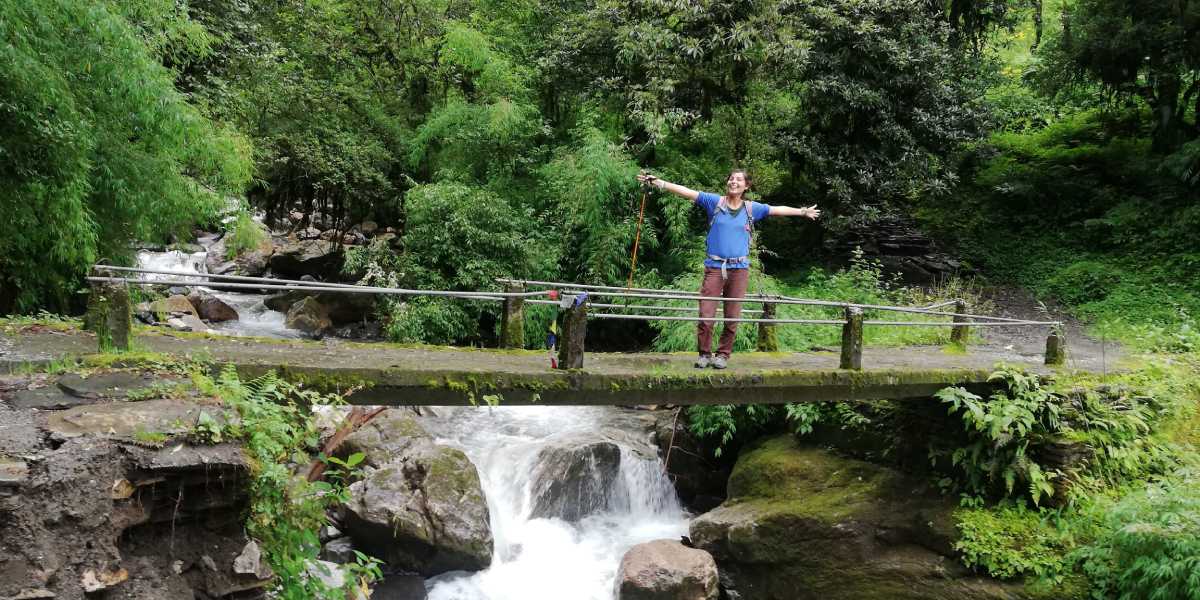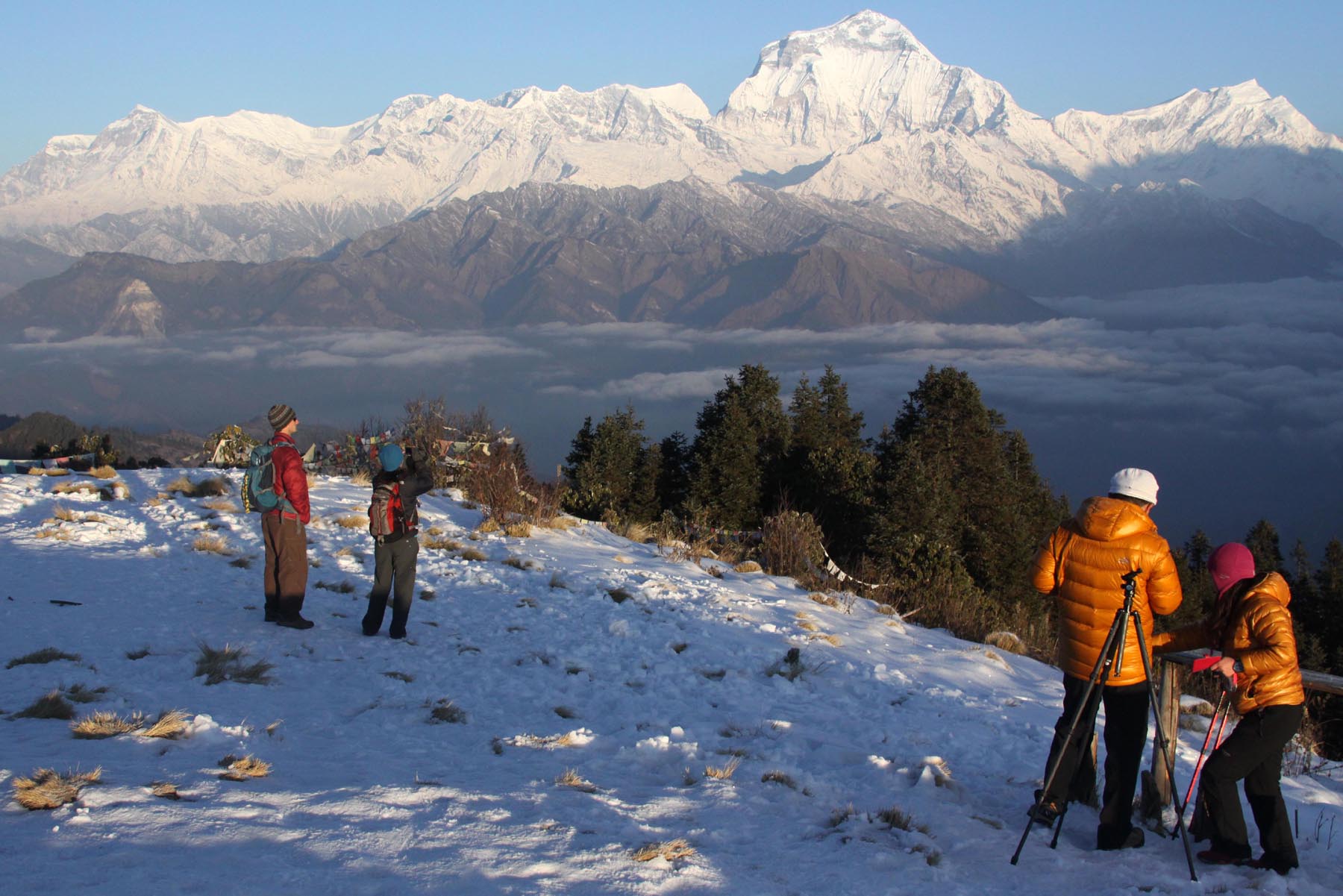This is the ideal tour for those who like the forest scenery, the traditional villages, history, and culture since it combines very nice hiking over hills and down into river valleys with a visit to temples, shrines, and medieval towns. Time in Nepal will accompany you through Tamang villages, allowing you to see the inhabitants in their daily lives. An Unforgettable, Unique Tour!
Duration of the tour: 6 nights/7 days
Highlights
The medieval fragrance of Bhaktapur, the attractive traditional settlement of Balthali village, the green terraced farmlands and forest scenery, the Tamang villages with their beautiful houses, the inhabitants in their daily lives, and the historical Namobuddha monastery.
Namobuddha Hike Itinerary
Day 01 – Pick up at the airport and transfer to the hotel
Day 02 – Visit Patan, Kathmandu Durbar Square, and Rickshaw tour of the old Kathmandu
Day 03 – Drive to Panauti, visit this medieval town, and later drive to Balthali. Overnight in resort
Day 04 – Hike to Namobuddha monastery and overnight in the resort
Day 05 – Drive to Bhaktapur and visit the town
Day 06 – Visit of Boudha stupa, Pashupatinath, and Swayembu stupa
Day 07 – Drop off at the airport for departure
Brief information about the places we will visit during this tour:
Patan - Once one of the independent kingdoms of the Kathmandu Valley, Patan is also the oldest existing Buddhist city in the Valley. Despite its close proximity to the capital Kathmandu, its ‘preserved’ ancestral culture distinguishes Patan as a unique place to experience. Patan is also known as Lalitpur, the “City of Beauty”, and its unique Durbar Square is surrounded on all four sides by awe-inspiring temples and shrines.
Kathmandu Durbar Square - Kathmandu Durbar Square is a historic place of royals where kings were crowned in the past. This durbar square is listed in the UNESCO World Heritage sites and reflects the royal history, religion, and culture. You can see the Taleju Bhawani, the tallest temple of Kathmandu Valley on the side of the palace built by King Ratna Malla. Inside Kathmandu Durbar you get to see the Kumari living goddess house, Hanuman Dhoka, and Jagannath Temple with erotic carvings. You will also get the chance to walk along the famous Freak Street, where during the 60s and 70s the hippies used to stay.
Panauti - One of the most fascinating Newar towns, Panauti stands at the confluence of two rivers in a small valley surrounded by mountains. The town is noted for two fine examples of Malla temple architecture, the Indreshwar Mahadev Temple and a Narayan shrine.
Balthali is an attractive traditional settlement in a hidden valley, hemmed on one side by a river gorge and pine forests and on the other side by hillsides terraced with rice and millet fields.
Namobuddha Monastery - This tranquil monastery, located 40 kilometers from Kathmandu, is one of Nepal’s holiest Buddhist pilgrimage sites. It is known by Tibetans as Takmo Lu Jin, which means “Tigress Body Generosity” since according to legend Namo Buddha stupa is the site where Buddha encountered a tigress close to starvation and was unable to feed her cubs. Buddha allowed the tigress to consume him and thereby feed her cubs
Bhaktapur is probably the most visited of the three historic cities of the Valley. It is a medieval town locked in centuries-old beliefs and traditions. The city is famous for its glorious architecture, sky-high temples, like the awesome Nyatapola Temple, Nepal’s tallest ancient structure, fine clay pottery, and royal courtyards where devotees, still today celebrate their pre-historic festivals.
Boudhanath Stupa is one of the largest stupas in the world and is the religious and cultural center of the broad community of Tibetan Refugees in Nepal. It is a holy place rich in Buddhist symbolism.
Pashupatinath is the most important Hindu Temple in Nepal and is set on the banks of the sacred river Bagmati. It is not only a religious destination, but a mix of art, culture, peace, and devotion. Hundreds of rituals are performed every day on its premises, which are considered an open, living museum. In the age of mythology, Lord Shiva and his consort lived here by this tributary of the holy Ganges.
Swayambhunath Stupa overlooks most parts of the Kathmandu valley, offering the visitors a panoramic view of the city, particularly enchanting at sunset. According to the legend, the hill on top of which the stupa rises, originated when the valley was created out of a primordial lake It is said that the great Emperor Ashoka visited this site more than 2,000 years ago.



